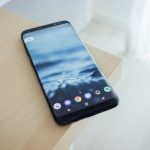OnePlus made a reputation for itself within the smartphone industry with great value-for-money offerings, but this year, prepare for a few sticker shocks.
The OnePlus 8 is $699, a $100 increase over the $599 OnePlus 7T, and therefore the OnePlus 8 Pro is $899, a whopping $230 increase over the $669 OnePlus 7 Pro. Welcome to 2020: the year of the super-expensive smartphone.
The cheaper OnePlus 8 is essentially the 7 Pro with updated specs—it comes without the pop-up camera and with a lower-quality rear camera system. Compared to the 8 Pro, there’s still a Snapdragon 865, there’s still 8 or 12 GB of RAM (albeit with slower LPDDR4X rather than the DDR5 within the 8 Pro), and still 128 or 256 GB of UFS 3.0 storage. The higher-spec tier of 12 GB of RAM and 256 GB of storage remains $100 more, so $799.
The large downgrades are available the display, which drops right down to 90Hz rather than 120Hz and uses a rather smaller 6.55-inch display plus a completely fine 1080p resolution rather than 1440p.
The cameras get cheaper sensors, the battery may be a smaller 4300mAh, and therefore the big additions to the 8 Pro—wireless charging and IP68 water resistance—aren’t on the OnePlus 8, though OnePlus says the phone remains somewhat water-resistant.
In terms of specs and pricing, a method to seem at OnePlus’ new lineup is that the lower-end tier—previously occupied by the OnePlus 7 and 7T—is the departure.


As we said, the OnePlus 8 compares favorably to the 7 Pro, and therefore the 8 Pro is in a good higher pricing tier with wireless charging and other extras.
Meaning it’s yet one more year of OnePlus phones being costlier, which went on just about every single year the corporate has been in business. If you are looking for something cheaper, hopefully, the rumors of that mid-range OnePlus phone come true. There’s certainly room for it.
Design—Pretty much just a 7 Pro
There is almost nothing new mention within the design department. The 8 and eight Pro stick very closely to the previous OnePlus designs, especially the 7 Pro.
You will get front and back glass panels, curved edges, and a metal band around the edges. There are still in-screen optical fingerprint readers, which don’t seem any bigger or faster than last year.
Besides the standard faster specs, the large addition this year is that the 120Hz display on the 8 Pro.
PC’s gamers have known this for a short clip, but yes, faster displays are very nice, and therefore the 120Hz display may be a nice upgrade over the 90Hz display on the OnePlus 7 Pro and 7T.
Everything is buttery smooth at 120Hz, and therefore the animations, scrolling, and screen transitions are all a joy. This is often the smoothest, fastest-feeling smartphone on the market.
The display remains curved along the long edges, though the display curve on the OnePlus 8 Pro is deeper than on the OnePlus 8. I’ve never been a lover of this « feature » since it only serves to distort the edges of apps and videos and reflects glare along the edges in certain lighting conditions.
The back comes during a few wild colors. My 8 Pro came within the most vibrant blue color ever created by mankind, covered with a satin finish.
The OnePlus 8 came during a shiny « Glow » color, which may be a color-changing purple/yellow/pink gradient.
These glass phones still collect plenty of fingerprints, but the satin finish on the blue version does some work to cover all the fingerprints, which is good.
Other than the new camera setups, the hardware is indistinguishable from previous OnePlus devices. The side-mounted three-position audio switch returns, and that is still a fast, easy thanks to switch between ringing notifications, vibrate, and mute.







